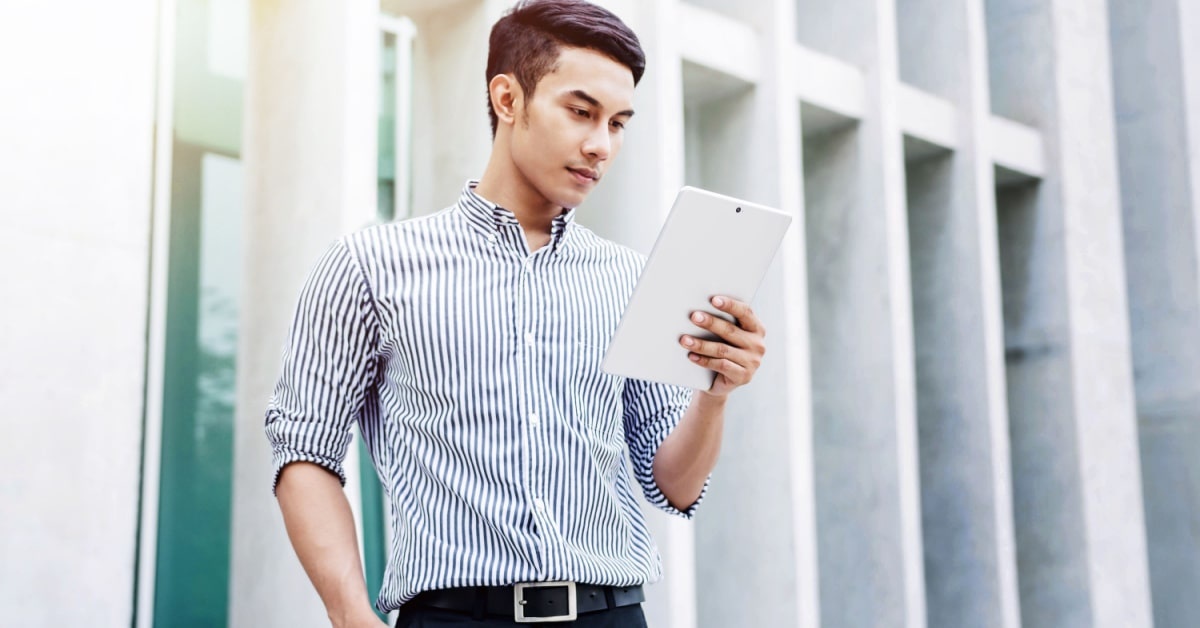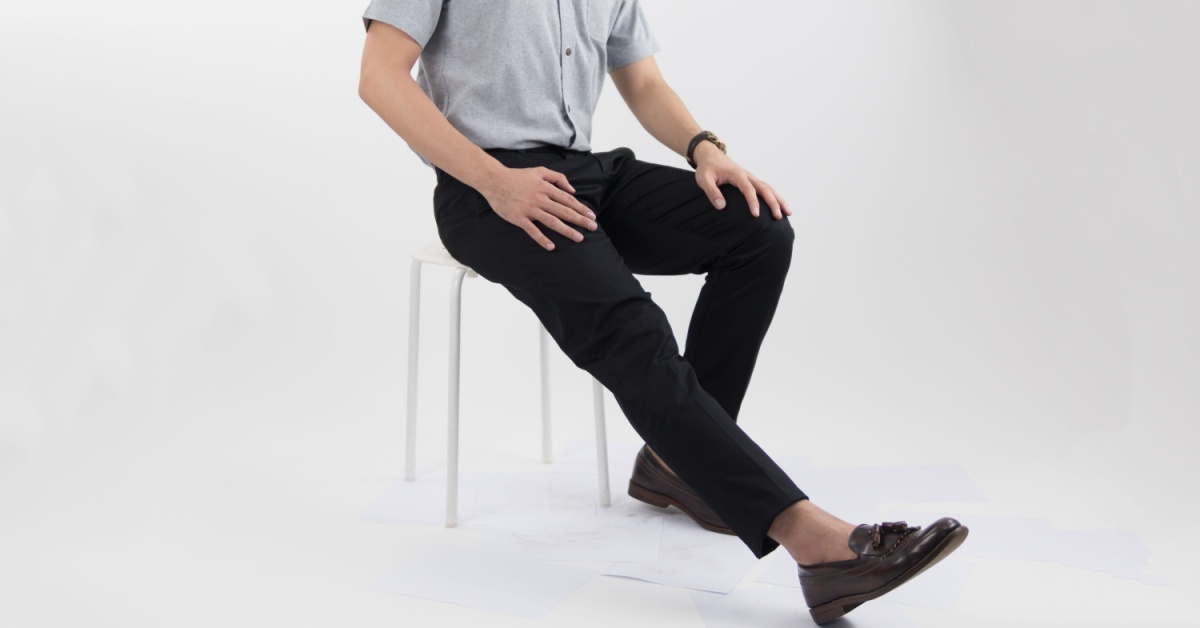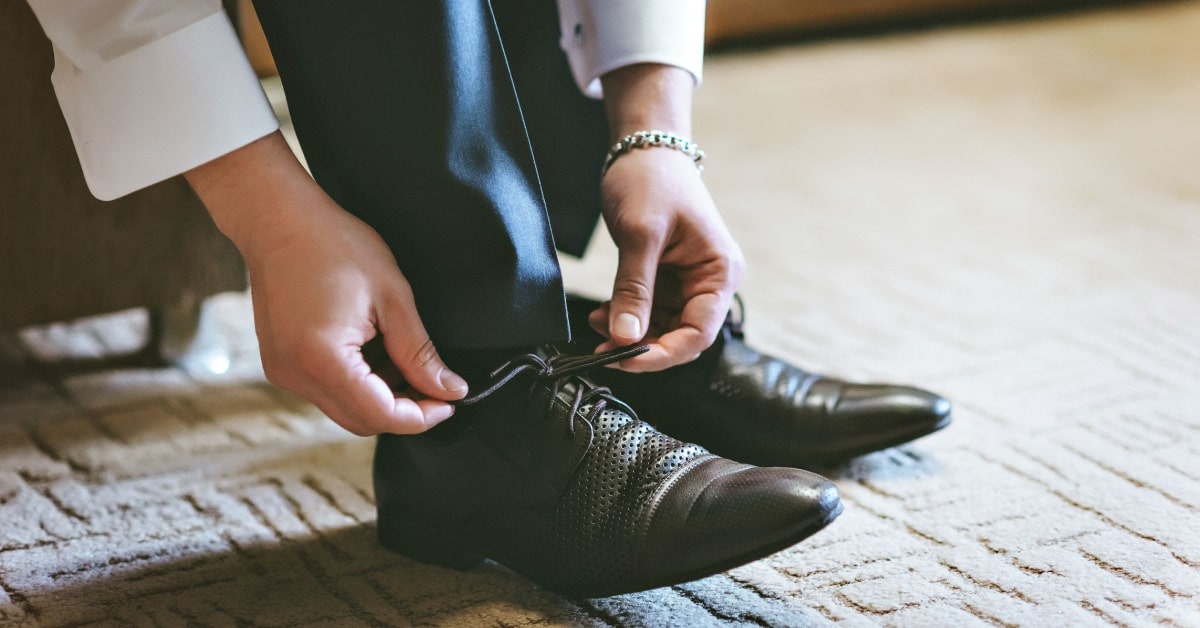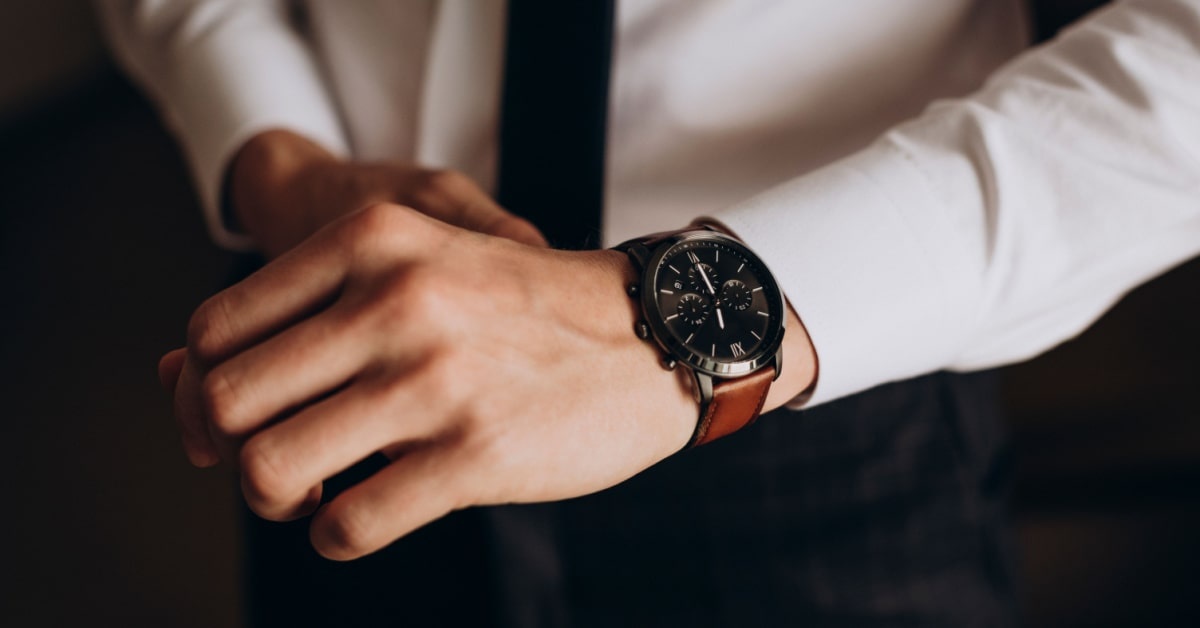Business casual attire for men in 2023: Examples, mistakes, photos
Introduction
Business casual attire is the fashion world's answer for a stylish yet comfortable dress code in the workplace. Picture yourself as the lead character in a workplace fashion show.
Men's business casual outfits are less formal than traditional suits. Still, they maintain a polished and professional appearance suitable for the workplace.
This dress code includes collared shirts, chinos or dress slacks, and closed-toe shoes. It encourages showing your style while following your workplace dress code. It allows for different outfit combinations demonstrating your competence and confidence.
Mastering the business casual look can boost your self-confidence and empower you. When you look good, you feel good, which impacts your work performance and social life. Read on to learn the key rules, see examples, and elevate your wardrobe to make a lasting impression.
- The ultimate guide to understanding business casual dressing
- Complete your business casual attire for men: pieces that exude professionalism and comfort
- Dress sharp for any business casual occasion
- Tips for nailing business casual attire for men
- Conclusion
- FAQs
The ultimate guide to understanding business casual dressing

Dressing appropriately shows that you are attentive to details. This also shows that you can adapt to different professional settings. Dressing well in business casual attire can help you make a strong first impression. This is vital when meeting clients or attending networking events.
Business casual vs. formal attire
Business casual attire allows you to maintain a polished appearance without a suit. This style uses collared shirts, dress slacks, and closed-toe shoes, which allow for versatile outfits.
Formal business attire is more structured and conservative. It often includes a suit (with a matching jacket and pants), a dress shirt, a tie, and polished shoes.
Factors to consider when choosing business casual attire
When choosing casual clothing for work, first understand that every company's acceptability for "business casual fashion" varies. Your clothing choice reflects your workplace, whether it is traditional, creative, or remote.
Consider the weather in the Philippines, which is hot and humid. Use lightweight fabrics like linen and cotton to stay cool and comfortable. During the rainy season, wear water-resistant shoes and bring a light jacket or umbrella to protect you from sudden downpours. Also, think about your body type, skin tone, and personality when it comes to style.
Key elements of business casual attire for men
- Ditch the suit jacket: Say goodbye to the suit and tie, which are not required for this dress code.
- Pants or slacks:Start with a pair of well-fitted pants or slacks. Choose colors and fabrics that reflect your style and your workplace culture.
- Button-up shirts and polos: Pair your pants with a nice button-up or polo-style shirt. Colored button-downs are welcome, so don’t be afraid to add a pop of color to your ensemble.
- Stylish footwear: Go for moccasins, loafers, Oxford shoes, or double monk straps. These choices are comfortable and stylish. Depending on your work culture, you can even wear moccasins without socks!
- Accessorize wisely: Neckwear such as ties or bow ties are a no-go. But feel free to accessorize with a lapel pin or a patterned pocket square for a touch of personality.
- To button or not to button: This is all about personal preference. You can keep your top button undone or fasten all the buttons on your shirt.
- Magnetic collar stays: If you leave your top button undone, invest in magnetic collar stays. These keep your collar upright and help you maintain a sharp appearance.
Common mistakes to avoid when dressing in business casual attire for men
Clothing more suited for the beach, the gym, or a nightclub is unacceptable. Specific items to avoid in a business casual setting are sleeveless tops, ripped clothing, shorts, flip-flops, and over-the-top accessories.
Business casual is about dressing down your work clothes, not adding in your everyday attire. Avoid old trainers or casual boots; keep a pair of professional shoes in the workplace, if needed.
Complete your business casual attire for men: pieces that exude professionalism and comfort
Tops for business casual attire for men

Types of shirts suitable for business casual attire for men
Business casual shirts should have room for movement while maintaining a tailored appearance. These should fit comfortably, neither too tight nor loose. Options include:
- Oxford button-down shirts:Versatile, collared shirts with button-down points made from a durable, woven fabric called Oxford cloth. These are typically worn in professional or casual settings.
- Dress shirts:Formal, long-sleeved, collared shirts made of fine fabrics with a smooth finish. These are often worn with suits or under blazers for professional or formal occasions.
- Office shirts: Long or short-sleeved collared shirts designed for everyday workwear. These are usually made of breathable materials like cotton or polyester blends.
- Polo Shirt:Casual, collared shirts with a short, placket neckline and a few buttons. These are worn as a comfortable alternative to button-up shirts in casual settings.
How to choose the right shirt for business casual attire for men
For men, the most common shirt choice for business casual attire is a long-sleeved button-down collared shirt. This gives you a relaxed yet professional appearance.
Short-sleeved polos or button-downs are suitable for business casual attire in warmer weather. Remember to observe your workplace dress code. Ask your HR department if short sleeves are acceptable.
Examples of appropriate men's business casual shirt combinations for different occasions
- Job interview:A crisp dress shirt, tailored slacks, and a blazer for a polished and professional appearance.
- Business meeting:Apatterned dress shirt, matching chinos, and a sports jacket to maintain a sense of sophistication.
- Casual Fridays at your workplace: A polo shirt and chinos or well-fitted dark jeans. Check if your company's dress code permits jeans.
Guidelines for tucking in or leaving a shirt untucked
- Oxford button-downs and dress shirts should always be tucked in for a business casual setting.
- Office shirts, with a more relaxed fit can be worn untucked if the shirttail is designed to be worn that way. Look for a shirttail with a curved hem and a length that falls midway between your waistband and the bottom of your back pocket.
- Polo shirts can be untucked in most business casual environments, but ensure the hem is not too long. If you are unsure whether to tuck your shirt in, try pairing it with a blazer. This can help you strike the right balance between formality and comfort.
Bottoms for business casual attire for men

Appropriate business casual pants should fit well, with a slight taper and no bunching or sagging in the rear or waist area.
Types of pants suitable for business casual attire for men
- Dress Pantsare often made from lighter, more comfortable materials such as cotton, polyester, or a blend of both.
- Slacksare typically made from wool or wool blends. These usually have a straight or slightly tapered cut. They often have a crease running down the front.
- Chinos(also called khakis) are crafted from cotton twill fabric, have a slightly tapered cut, and can be found in neutral colors.
- Dark jeansare denim pants with a deep, rich color. They look more polished and sophisticated than lighter washes. They can be appropriate for a casual Friday or more relaxed workplaces, but always check your company's dress code. Choose straight-leg, slim-fit, or bootcut cuts, as long as they fit well and are not too tight or loose.
How to choose the right pants for business casual attire for men
Many modern organizations have relaxed dress codes. In general, dress slacks or chinos fall within most dress code guidelines. Khakis are an especially flexible option for business casual outfits and they pair well with formal and informal shirts.
When selecting pants, consider your workplace culture. Aim for simple or neutral-colored pants in shades like black, gray, tan, or darker. Steer clear of bright or flashy colors (like neon yellow).
Examples of appropriate business casual pants combinations for different occasions
- Job interview: Tailored slacks in a dark color, a dress shirt, and a blazer.
- Casual business meetings:Khakis or slim-fit pants, and a blazer. Consider solid, dark-wash jeans that are well-fitting if your dress code allows.
- Casual Fridays:offices often permit jeans or chinos with a casual button-up. Your attire depends on the usual dress code.
Guidelines for matching pants with appropriate business casual shoes for men
- Pairing dress slacks with leather dress shoes, such as oxfords or loafers, is best to maintain a polished look.
- Chinos can be paired with various footwear such as loafers, dress boots, or brogues. This depends on the formality of the occasion.
- If you're wearing jeans, choose dress boots or clean, minimalist sneakers if permitted by your company's dress code. This is to ensure a stylish yet casual appearance.
Business casual shoes for men

Business casual shoes balance comfort and style. Color plays a large part in how formal or casual your footwear looks so go for darker shades of brown, red, and green. Black is considered a formal color but you can balance this out with a more casual style, like loafers.
Types of shoes suitable for business casual attire for men
- Oxfordsare classic closed-lacing dress shoes with a low heel and a sleek appearance.
- Derby shoes, or bluchers, are open-laced dress shoes with a more relaxed construction than Oxfords.
- Monk strapsare unique dress shoes with a strap and buckle closure instead of laces. They come in single or double-strap varieties and can be made from leather or suede.
- Loafersare slip-on dress shoes characterized by a low heel and a moccasin-style construction. They typically have a streamlined, minimalist design.
- Dress bootsare versatile footwear that combine the elegance of dress shoes with the functionality of boots. Two popular types are Chelsea Boots and Chukka Boots.
- Broguesare dress shoes or boots characterized by decorative perforations along the edges of the leather pieces.
How to choose the right shoes for business casual attire for men
Go for comfortable, durable materials, like leather or suede, that match the atmosphere of your work setting. Choose versatile yet classic colors like brown or oxblood, as they can be paired with a range of pants.
Examples of appropriate men's shoe combinations for different occasions
- Job interviews: dark brown Oxfords or loafers, chinos, a collared dress shirt, and a blazer (optional).
- Business meetings: Derby shoes, dress pants, and a dress shirt.
- Business trips: loafers are perfect for long days or transitioning between events. Pair these with slacks or chinos.
- Casual Fridays:dress boots (Chelsea or Chukka) which complement dark jeans, and a button-down shirt.
- Networking events:Monk straps, chinos or dark jeans, and a dress shirt.
Guidelines for maintaining shoes in good condition
- Use desiccants or stuff newspapers in your shoes to absorb moisture.
- Clean and polish your shoes regularly to keep them dust-free and maintain their natural color.
- Utilize shoe trees to preserve the texture and shape of your shoes.
- Store shoes away from sunlight to prevent dry-rotting.
- Opt for breathable fabric bags over plastic or cardboard shoe boxes for storage.
- Keep the soles clean by tapping off dust and brushing away dirt.
- Rejuvenate leather shoes by applying shoe cream overnight before wearing them.
Men's accessories for business casual attire

By selecting the right accessories and paying attention to details, you can achieve a sophisticated business-casual look to make a lasting impression.
Types of accessories ideal for business casual attire for men
- Forjewelry, choose leather or wooden bracelets and limit metal bracelets to one, matched with your watch and other metals. Avoid excessive necklaces and earrings in professional settings. Select ornamental rings with minimal bulk.
- Simple leatherbeltsin black or brown shades are versatile and can complement most outfits. Lightly brogued, tooled, or woven leather belts can also work. For a casual look, fabric belts with various textures and colors can be used.
- Sockswith colors or patterns can help adjust the formality level of an outfit. Two-toned shadow-striped socks or socks with clock patterns are acceptable.
- Colorful shoelacesthat contrast with the color of the shoe can add a pop of color to your outfit.
- Pocket squarescan add color and visual interest to an outfit. Different colors, designs, and folding methods can impact your outfit's level of casualness or formality.
- Wristwatchescan work within the business casual dress code. The exception would be overly large or excessively detailed watches.
- Uniquecufflinkdesigns can help tone down the formality of an outfit. Vintage cufflinks can also be an interesting choice.
- Boutonniereswith smaller blooms and more subdued colors can make your outfit feel more formal. Meanwhile, larger blooms and brighter colors can make it more casual.
- Avoid backpacks. Instead, carry a canvas or leatherbagor a leather bag in black or brown, as these exude a refined yet casual vibe.
How to choose the right accessories for business casual attire for men
While ties are optional, a knit tie can add a touch of sophistication to a casual outfit.
Accessories like leather or wood bracelets are best suited for casual and business-casual outfits, while metal bracelets are reserved for more formal occasions. A canvas or leather bag is a stylish choice, with neutral hues and classic designs being the safest options.
In addition, you may wear versatile leather belts and simple leather or metal watch bands for a business-casual look. Match belt colors to shoes and select sock colors that complement or contrast your outfit.
Proportion is key, with larger belt buckles being less formal. Pocket squares can vary in formality based on color and pattern. Cufflinks can be made more casual with unique or dynamic designs.
Examples of appropriate accessories for different occasions
- Job interview:A black or brown leather belt matched with your shoes and a simple leather-band watch.
- Business meeting:elegant cufflinks to communicate confidence and competence.
- Business trip:stylish socks, a versatile belt, and a watch with a simple leather band.
- Casual Fridays:bolder sock colors or patterns, fabric belts, or a brightly colored pocket square.
- Networking events: stand out and spark conversation with a unique pocket square or statement cufflinks.
Guidelines for avoiding over-accessorizing
- Follow the "less is more" rule.Keep your accessories minimal, and choose only a few statement pieces to complement your outfit. Instead of stacking multiple bracelets, wear a single statement watch to elevate your outfit.
- Balance your outfit.Don't let your accessories overpower your clothes. A leather belt can balance out a patterned shirt or add definition to a casual outfit without drawing attention away from the rest of your look.
- Choose one focal point. Pick one statement piece to be the focal point of your outfit and keep the other accessories subtle and complementary. This will help create a cohesive look. You could choose an elegant pair of glasses as your focal point.
- Mix and match with caution.While mixing different styles, colors and patterns can create a unique look, ensure that the pieces work well together and don’t create visual chaos. Mixing a patterned pocket square with a small boutonniere can create visual interest without overwhelming your outfit.
- Consider the occasion.Pick simpler, more elegant accessories for formal events, while casual events allow for bolder, more experimental choices. A sleek and simple messenger bag can be a great accessory for work and casual settings. Avoid flashy or overly bulky options that detract from your appearance.
Dress sharp for any business casual occasion
Since business-casual style is common in workplaces, it's the default choice when you aren't sure what to wear for a specific occasion. Here are some practical and stylish ensemble suggestions.
- Job interview: Use a lightweight, tailored blazer in a neutral color paired with a button-down shirt, slim-fit chinos, and a pair of loafers. You may also choose to add a watch for a more polished look.
- Business meeting: Consider a long-sleeved dress shirt in a solid color or subtle pattern paired with navy slacks. Finish the look with derbies for a comfortable yet professional appearance.
- Business trip: Choose a versatile outfit that can transition from day to night, such as a sports coat, a breathable and wrinkle-resistant dress shirt, and khakis. Complete the look with a pair of comfortable loafers that can be worn all day.
- Casual Friday: Go for a smart polo shirt in a solid color or muted pattern paired with dark-wash jeans. Add a lightweight, unstructured blazer and complete the outfit with a pair of clean, minimalist sneakers, if your workplace dress code allows sneakers.
- Networking events: Dress in a breathable, short-sleeved button-down shirt in a subtle pattern or solid color, along with slacks. Add a lightweight, unstructured blazer if the event is more formal, and finish the look with a pair of loafers.
Tips for nailing business casual attire for men

- Pay attention to fit and proportion: Choose clothing that fits you well and is proportionate to your body size and type. Avoid clothes that are too tight or loose.
- Add a personal touch to your business casual attire: Incorporate elements that showcase your style, such as a pocket square, or watch.
- Experiment with different combinations and styles: Don't be afraid to try new combinations, colors, and patterns.
- Stay up-to-date with fashion trends: Keep an eye on current trends and incorporate them into your wardrobe, ensuring a modern and stylish appearance.
- Maintain good hygiene and grooming:Make sure your hair, facial hair, and nails are well-groomed, and practice good personal hygiene.
Conclusion
Business casual attire balances formal business wear and more relaxed, everyday clothing. It is one of the most common and universal styles among the various workplace dress codes. Remember to consider different factors when assembling your business casual wardrobe.
Key wardrobe pieces create a solid foundation, while accessories act as the cherry on top of your fashion sundae. Don't be afraid to mix classic pieces with fashion trends. Experiment with colors and patterns, and try different combinations to reveal your personality.
Always dress for specific business casual occasions, and let your attire be your canvas to create a lasting impression.
FAQs
- What is the best length for business casual pants?
Please pay attention to the break of your pants, where they crease near the top of your shoe. Pants without a break may look poorly fitted, too casual, or short. For business casual pants, avoid those without a break or with a full break. A half or quarter break is recommended for balance, and a tailor can create the desired break.
- What's the difference between business casual and smart casual?
Business casual for men is a neat and well-fitted style suitable for many offices. It involves dress shirts or polos, pants or chinos, dress shoes or loafers. Smart casual is a more relaxed dress code ideal for social events, allowing for personal style while still sophisticated.
- What isthe main difference between business casual and business formal attire?
A formal business outfit involves a suit, dress shirt, tie, and polished dress shoes. But casual business attire offers more flexibility and does not must a full suit or tie.
- Can I wear jeans?
Dark, well-fitted jeans may be appropriate for casual Fridays or more relaxed workplaces. You should always check your company's dress code before wearing them.
- Are sneakers appropriate?
Clean sneakers may be acceptable in some workplaces. However, you should check with your company's dress code for appropriate footwear for your work environment.
- Can I wear a blazer?
A tailored blazer or sports jacket can be essential to business casual attire, adding a polished touch to your outfit.
- Is it necessary to wear a tie?
A tie is considered optional for business casual attire. Assess the occasion and your company's dress code to determine if a tie is appropriate.
